Boeing Upgrades Air Defense Vs. Russians: Avenger SHORAD
Posted on
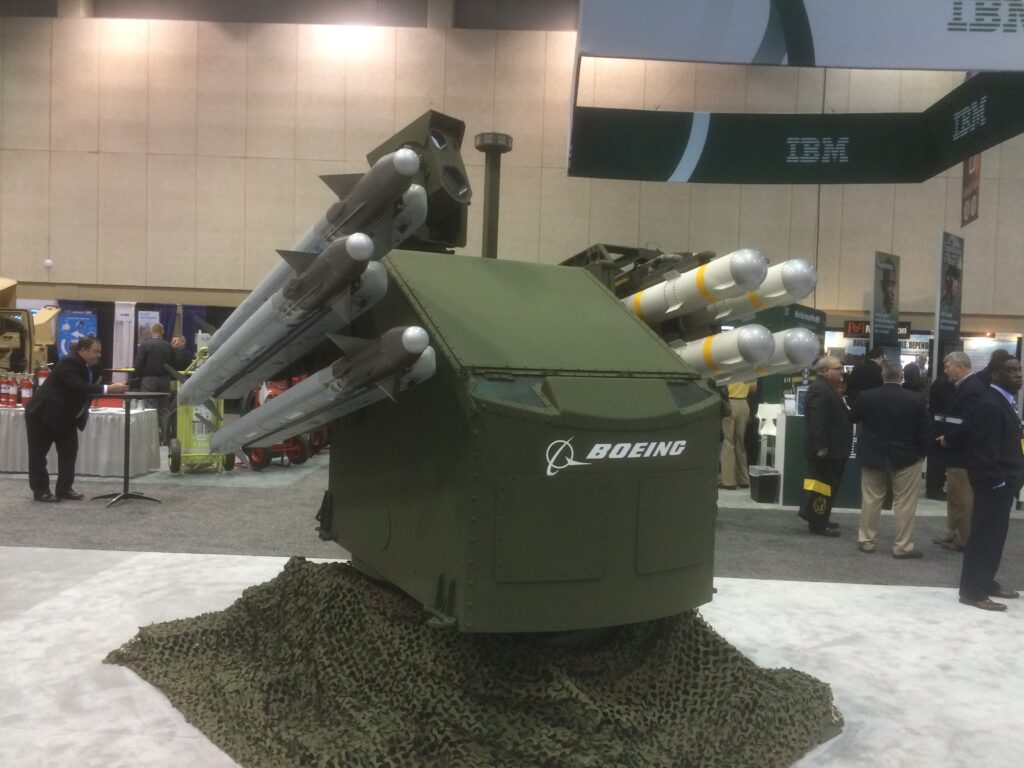
Boeing’s prototype next-generation Avenger anti-aircraft turret, loaded with Hellfire and AIS-3 missiles.
Increasingly anxious about Russian drones and helicopters, the US Army is inviting contractors to demonstrate Short-Range Air Defense systems at a “SHORAD shoot-off” this September. The closest thing to an incumbent in this race is Boeing, which developed the Army’s current Avenger, an old-school unarmored Humvee carrying Stinger missile pods. Now Boeing has upgraded the Avenger to fire more powerful missiles like Hellfire and AI-3 — and even lasers — off more formidable vehicles like the 8×8 Stryker and the tracked M2 Bradley.
“I did SHORAD my entire life,” said Jim Leary, who retired from the air defense corps as a lieutenant colonel and now works air defense for Boeing. “So I have an understanding, from having done it, of how to support the maneuver force (i.e. frontline infantry and armored vehicles). That’s why the vehicle’s so important.”
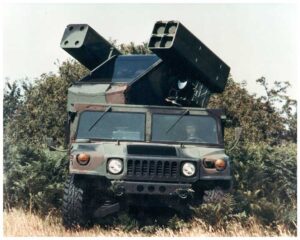
The current model of the Avenger anti-aircraft missile vehicle, with Stinger missile launchers on an unarmored Humvee.
An unarmored Humvee worked okay for the Cold War, when the Army’s AirLand Battle doctrine envisioned a clear front line — held by dug-in infantry and armored vehicles — with fragile support vehicles shielded behind it. Horrific Humvee losses in Afghanistan and Iraq showed there is no safe rear area anymore. Now the Army’s emerging doctrine of Multi-Domain Battle envisions a chaotic future battlefield where US forces operate in small units, widely dispersed and constantly moving to evade attack.
Since these “distributed operations” task forces may advance too far for static missile defense like Patriot batteries to protect them — or the enemy may blow the Patriots up — each unit needs its own SHORAD to defend against enemy air attack. Those SHORAD units, in turn, need to be mobile enough to keep up with the vehicles they’re protecting and tough enough to survive the roadside bombs, anti-tank missiles, and other attacks that will come their way.
That’s why, in March, Boeing and the Army fitted a new-model Avenger turret onto a Stryker, the eight-wheel-drive armored vehicle used by medium-weight formations. This vehicle will be on display at the Army artillery center on Fort Sill, Oklahoma for an officers’ conference in March. Boeing is also looking at an updated version of the M6 Bradley Linebacker, the air-defense variant of the family of tracked vehicles that makes up a third of each heavy armored brigade. (The anti-aircraft missiles would replace the standard Bradley’s TOW anti-tank missiles; unlike the Stryker, the Bradley already has a turret, so there’s no need to add one).
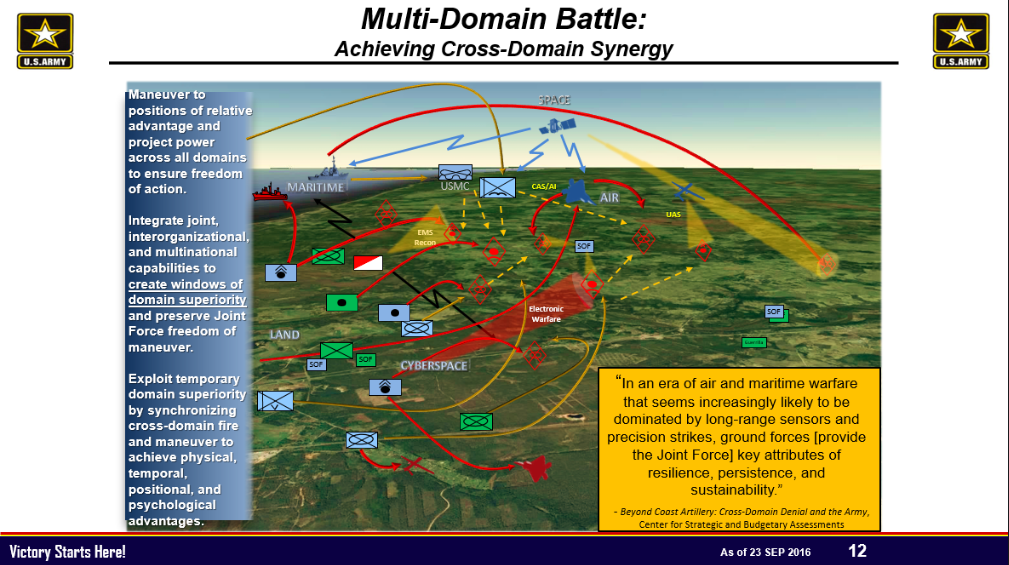
Boeing is also testing new weapons. Instead of the Stinger, an infra-red “tail chaser” that homes in on the heat of an aircraft’s exhaust, the new Avenger turret can fire longer-ranged, radar-guided weapons like Lockheed’s Longbow Hellfire — originally an anti-tank missile, now widely used by Predator drones — or the Raytheon’s AI-3 — a ground-launched variant of the AIM-9 used by fighter jets. In fact, the same turret can carry both at once, firing Hellfires from one side and AI-3s from the other.
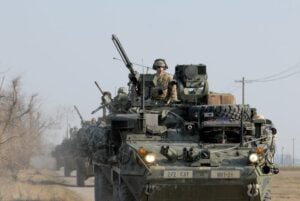
Stryker vehicles from the Army’s 2nd Cavalry Regiment in Romania.
Boeing even wants to integrate missiles and lasers on the same vehicle. It has already worked with General Dynamics, which makes the Stryker, to fit one of the 8×8 vehicles with a two-kilowatt laser (called MEHEL) and radio jammers. That’s not enough firepower to shoot down aircraft, but it could zap incoming drones indefinitely — the laser has power as long as the engine’s got gas — which would let the missile launchers save their limited number of shots for the harder targets. And since the 2 kW laser fit on the Stryker with room to spare, the same vehicle could transport infantry in the back or be fitted with an Avenger turret and racks for extra missiles.
At this point, the parable of Lincoln’s axe may come to mind: If the original Avenger was Stinger missiles on a Humvee, and the new Avenger changes both the weapon and the vehicle, what do the various versions have in common? The answer is the electronics.
“Our ability to take our weapons interface and shoot multiple missiles off of an existing combat platform — (one) that can maneuver with the infantry and maneuver with the armor and maneuver with the Stryker formations — is really what makes it unique,” Leary told me. It’s “a plug and play weapons interface,” he said, where adding a new weapon just requires updating software, like installing a new printer driver on your computer.
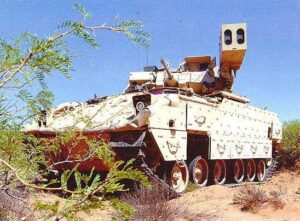
M6 Bradley Linebacker
Boeing developed the multi-missile Avenger launcher using its own Independent Research & Development (IRAD) dollars over the past few years and first test-fired it for the Army in 2013. The next year Russia seized the Crimea and effectively invaded eastern Ukraine, showing tactical skill and technological sophistication that forced the Army to take notice. The new Russian arsenal includes everything from new reconnaissance drones — used to target devastating barrages against Ukrainian troops — to Soviet-era Hind helicopter gunships and Sukhoi “Frogfoot” attack jets. The Army realized it had largely divested itself of Short-Range Air Defense since the Cold War: Many SHORAD systems were retired entirely, with all the Linebackers converted back to standard Bradleys, while only about 400 of the over 1,100 Avengers built remain in service. That’s why Boeing rolled out its new-model Avenger turret at last month’s Association of the US Army conference in Huntsville, Ala.
“That launcher that you saw at AUSA is a real launcher,” Leary said. “We’ve fired the Longbow missile off of it…fired an AIM-9 variant… even shot a two-kilowatt laser off of it.”
Now Boeing just has to convince the Army that their offering is the right solution for its urgent air defense needs. Said Leary, “All of industry is trying to anticipate…where the Army’s going to go.“
Subscribe to our newsletter
Promotions, new products and sales. Directly to your inbox.
